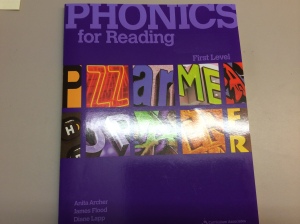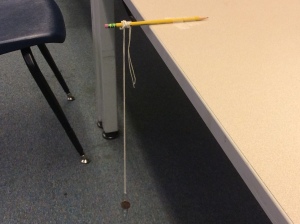P2 Practice differentiated instruction
This principle of HOPE indicates to me the need for awareness and differences in how teachers prepare and present lessons to students who may need help in accessing the material. In my time in special education and general education every day I also see the variety of ways in which we are able to offer instruction in an assortment of ways.
Recently I was working with the 6th grade general education class (which includes several of my ISES Intensive Social Emotional Support students). One student ‘Dean’ (who is a general education student) was able to use the book as well as listen to an audio book to help him keep pace. This proved to be a very effective strategy to keep his attention focused on the reading. Dean often has a hard time staying focused even though his reading scores are quite high. By keeping his mind as well as his eyes occupied on the text, Dean was better able to concentrate on one thing at a time rather than the distractions in the class (Medina, 2008).
Another student (‘Skyler’ who is a special education student) is a struggling reader. He is a very passive student, typically unmotivated to work hard or reach for goals (Pressley & McCormick, 2007). His teachers, including paraprofessionals, are aware of his below grade level reading and usually read information to him to help him with instructions etc. One of the ways we’re supporting his emerging reading skills is by working with him on building up his phonemic awareness. The curriculum is one that I’ve used before called Phonics for Reading (Archer, Flood, Lapp, & Lungren 2011). While other students are doing their reading curriculum, Skyler is working in the Phonics for Reading book (Archer, Flood, Lapp, & Lungren 2011).
The picture above is a sample of the Phonics for Reading workbook that we are using for Skyler (Archer, Flood, Lapp, & Lungren 2011). Because he is a struggling reader he uses the Phonics for Reading curriculum during literacy time to help build his phonemic awareness.
The evidence provided suggests an emerging competence in my ability to recognize and offer alternatives to all of the students that I work with on a daily basis.
Although I am familiar with many types of curriculum and programs, at this early point of my pre-service year I would still refer to a colleague to discuss the appropriateness of a particular material for a specific student.
I learned that the general education students often need assistance (which they may or may not be getting or asking for). All students regardless of the category or label they may have could benefit from specialized instruction. And although most students can work with the materials given, when we take the time and effort to create separate information for those students needing it, they often welcome the assistance to help them reach their peer level of academic work.
The implications are numerous for teachers having the ability to realize that many students, whether on an IEP or 504 plan, or general education, can benefit from specialized instruction. Students who don’t feel immediately overwhelmed by the material and who understand that help is available are more likely to stay focused and motivated to continue working (Medina, 2008)).
Offering differentiated instruction often means altering in some way either the format or the materials that the students interact with. This can be incredibly beneficial not only for those student’s who need help, but indeed, can help every student in the class as well. It can help clear up any confusion, (an example would be a simple modification such as making the materials ‘cleaner’ in appearance) which aids all students.
In addition to observing the many ways in which the special education and general education teachers find ways to offer differentiated instruction, I also am actively searching throughout this school year to find resources and new innovative ideas in the textbooks and journals that I read as a part of my pre-service teaching year.
References:
Medina, J. (2008). Brain Rules. Seattle, WA: Pear Press.
Pressley, M., & McCormick, C. B. (2007). Child and adolescent development for educators. New York, NY: Guilford Press.
Archer, A., Flood, J., & Lapp, D., Lungren, L. (2011). Phonics for reading. Curriculum Associates LLC.

